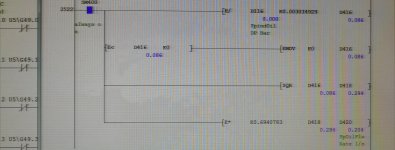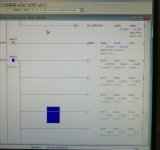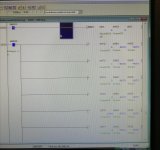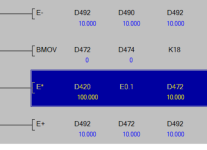Mas01
Member
The PLC code calculates oil flow rate and outputs it on D420. It is represented on the HMI as a vertical bar. Problem is that the operator says the value is too jittery to read as the value is constantly changing (I agree - it is doing several updates every second). To make it more readable, it was suggested that the displayed value be the average of the previous 10 values of D420.
Is this a good idea to make the value readable?
If so, I'm not sure how to do this.
I would need a counter (T10, say) that goes to 0 to 9 then resets.
I would need an accumulator i.e
---[+ D420 D422]---
Then a division
----[/ D422 k10 D424]----
Then display D424 on the HMI.
I'm not sure how to implement this.

Is this a good idea to make the value readable?
If so, I'm not sure how to do this.
I would need a counter (T10, say) that goes to 0 to 9 then resets.
I would need an accumulator i.e
---[+ D420 D422]---
Then a division
----[/ D422 k10 D424]----
Then display D424 on the HMI.
I'm not sure how to implement this.









